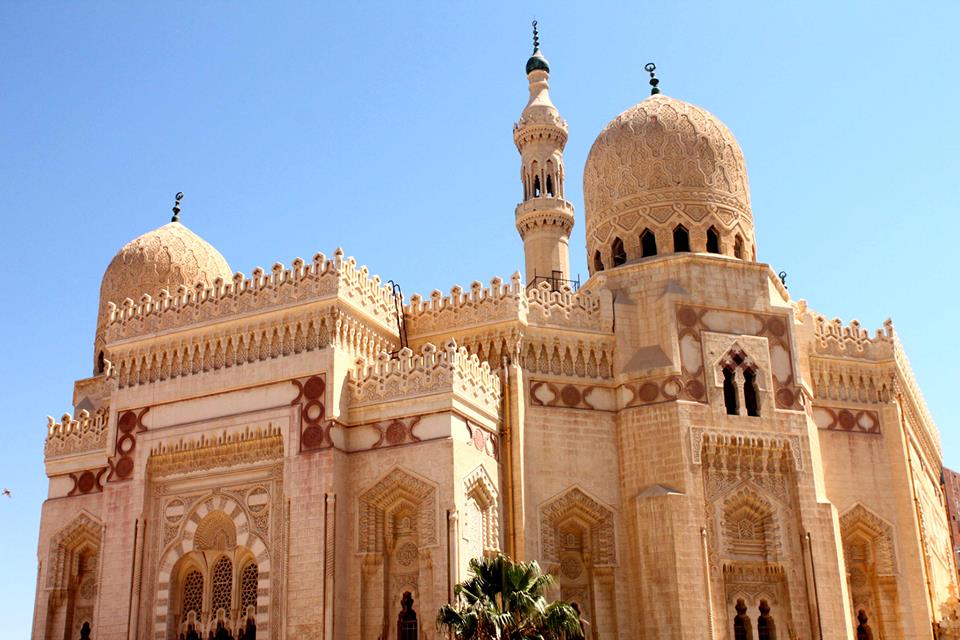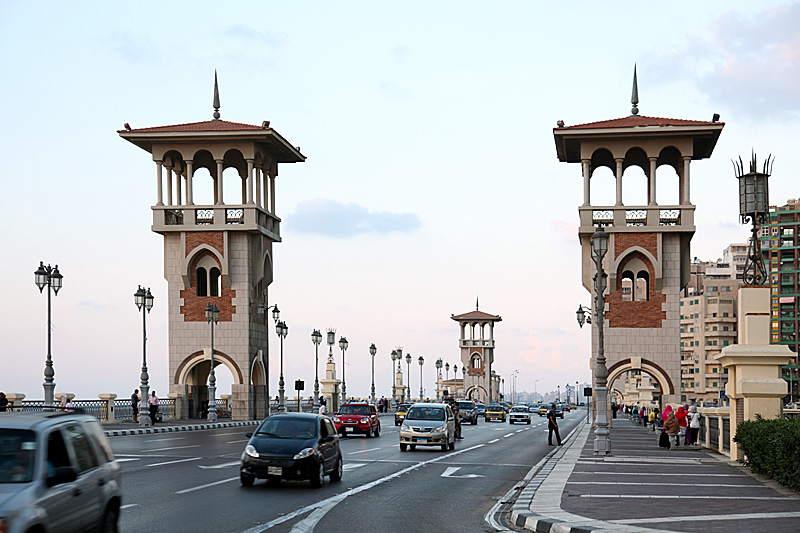Alexandria
A Glance at Alexandria:
More than 2,000 years ago Alexandria was the capital and the greatest city of Egypt. Today, though it has been surpassed by Cairo in both size and importance, Alexandria is Egypt’s foremost seaport and its second-largest city. Roads, trains, and airlines connect it with Cairo, 223 kilometres up the Nile Delta to the southeast. Miles of beautiful white sand along the Mediterranean coast provide the setting for this trading city and holiday resort. Summertime brings crowds of people to the beaches that stretch to the suburbs of Agami in the west and Abu Quir in the east.
Clear, calm waters make Abu Quir a popular place for fishing and other water sports.
Unlike most Egyptian cities, Alexandria is sometimes chilly and rainy in winter.
Education is compulsory for children aged 6 to 12. Young people may continue through a technical school or university level free of charge. The state-controlled University of Alexandria was founded in 1942.
Industries produce cotton textiles, paper, chocolate, processed foods, asphalt, and petroleum. Cotton is the most valuable export.
Lighthouse of Alexandria (Pharos Lighthouse):
Shortly after the death of Alexander the Great, his commander Ptolemy Soter assumed power in Egypt. He had witnessed the founding of Alexandria and established his capital there. Off of the city’s coast lies a small island: Pharos. Its name, legend says, is a variation of Pharaoh’s Island.
The island was connected to the mainland by means of a dike – the Heptastadion – which gave the city a double harbour. And because of dangerous sailing conditions and flat coastline in the region, the construction of a lighthouse was necessary. The project was conceived and initiated by Ptolemy Soter around 290 BC but was completed after his death, during the reign of his son Ptolemy Philadelphus.
Sostratus, a contemporary of Euclid, was the architect, but detailed calculations for the structure and its accessories were carried out at the Alexandria Library/Mouseion. The monument was dedicated to the Savior Gods: Ptolemy Soter (lit. saviour) and his wife Berenice. For centuries, the Lighthouse of Alexandria (occasionally referred to as the Pharos Lighthouse) was used to mark the harbour, using fire at night and reflecting sun rays during the day. It was even shown on Roman coins, just as famous monuments are depicted on currency today.
Alexandria during the Christian Era:
In the early Christian era, Alexandria enjoyed its prominence in the Roman world as a centre of Christianity. Tradition says that St. Mark introduced the new religion there from AD 45 to 62.
Many Christian men moved to the desert to live as hermits. Later these men joined together to form powerful monastic communities. Theological ferment produced the orthodoxy of Athanasius, the heresy of Arius, and the Gnosticism of Valentinus. Bishops throughout a wide region answered to the patriarchs of Alexandria.
Muntazah Palace:
The centre city is brightened by flowering plants in the Nuzhah, Zoological, and Antoniadis gardens. Seaside gardens decorate the grounds of the Muntazah Palace on a high dune overlooking Muntazah Bay. Muntazah was formerly the summer residence of the Egyptian royal family.
After the monarchy was overthrown in 1952, the palace buildings, known as Haramlek and Salamlek, were put to other uses. The Haramlek contains a casino on the ground floor and a museum of royal relics on the upper levels. The Salamlek has been converted into a hotel.
The peninsula:
A peninsula that was once an island separates two harbours, one to the east and the other to the west. At the entrance to the eastern harbour, at the tip of the peninsula, the three-story Fort of Qayet Bay houses a naval museum. Not far from the museum is the Marine Life Institute, with specimens of rare animals from the surrounding waters.
Agami:
An exclusive resort where Cairo and Alexandria’s elite spends their vacations. Known also as the Egyptian St-Tropez, Agami today also caters to the middle and working class. The resort village was founded in the 1950’s, but there are few structures remaining from this period. And while most of the housing in the area is simple, there are exceptions, including the Villa Lashin, built-in 1962 by architect Ali Azzam and the Beit el-Halawa built by Abd el-Wahid el-Wakil. Near here, you will also find the resort villages of Hannoville and Sidi Krier, which are also popular summer retreats. Historically, there is a small French fort built during the French occupation of Eg
POMPEY’S PILLAR, CATACOMBS & MUSEUM (Half Day):
Drive along the seafront to the Museum of Hydrobiology, Kait Bey castle and Mosque of al Mursi Abul Abbas. Then visit Pompey’s Pillar, which is 99 feet high, and made of beautiful red granite. It was erected by Posthumous, the Roman prefect, in honour of Emperor Diocletian. Then make a short visit to the Catacombs, which date as far back as the 1st and 2nd centuries B.C. finally visit the Greco-Roman Museum where exhibits and relics tell of the prosperity of Alexandria during the Greek and Roman Rule






